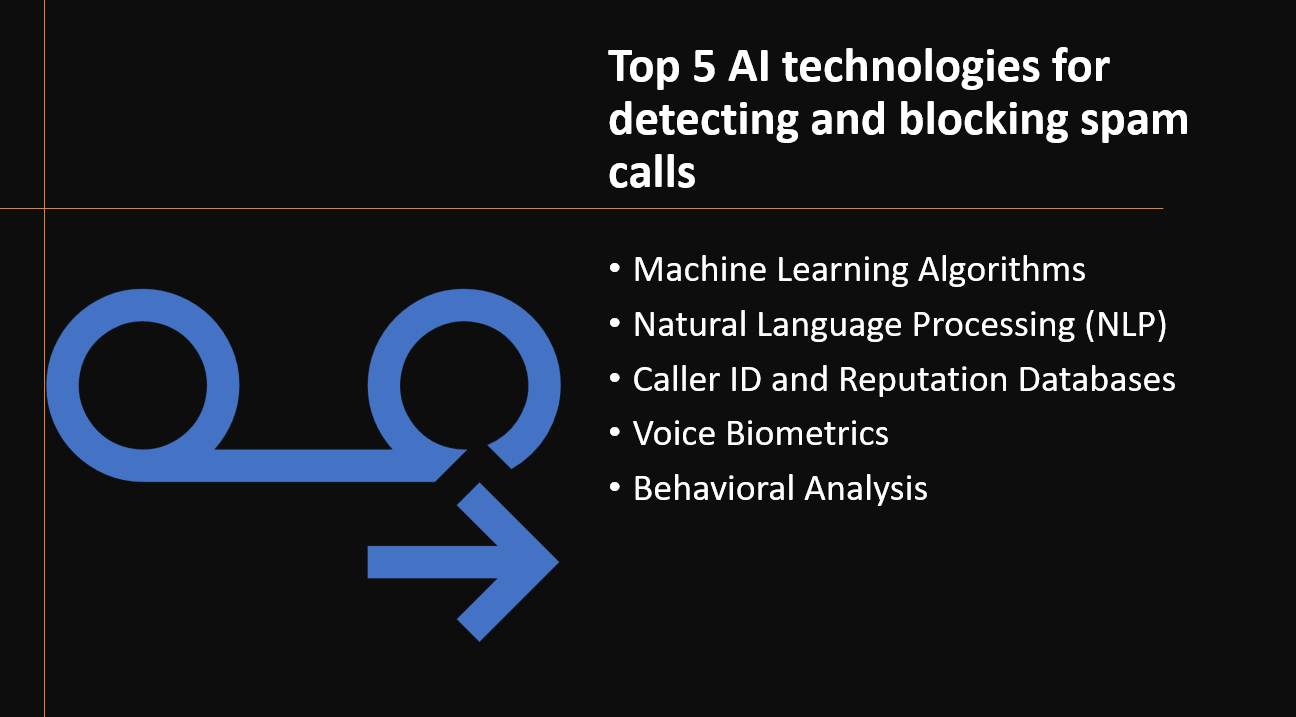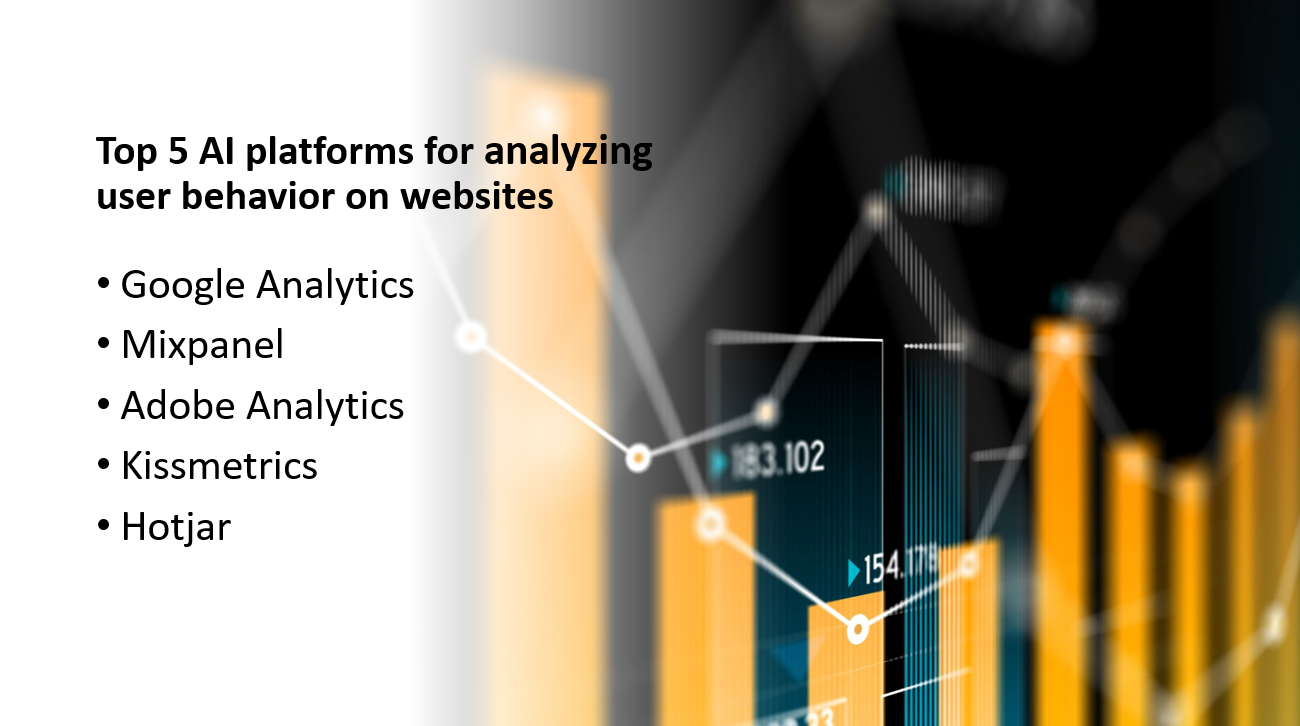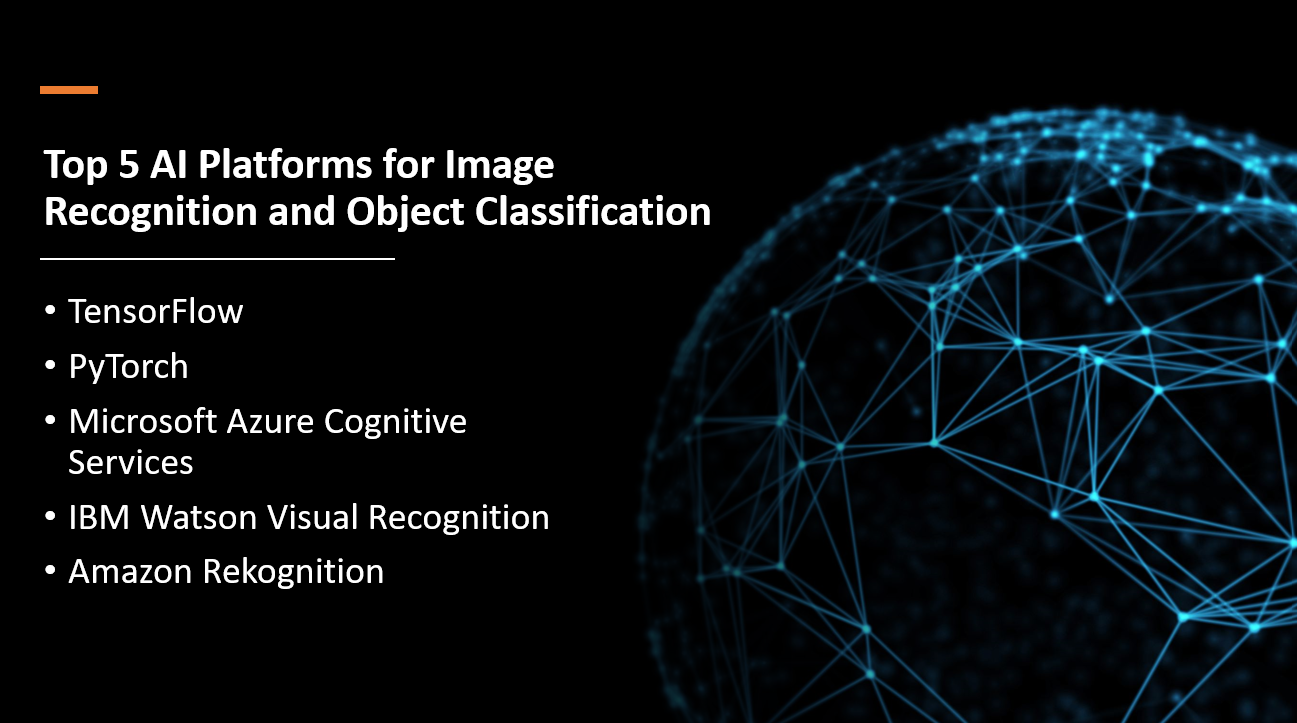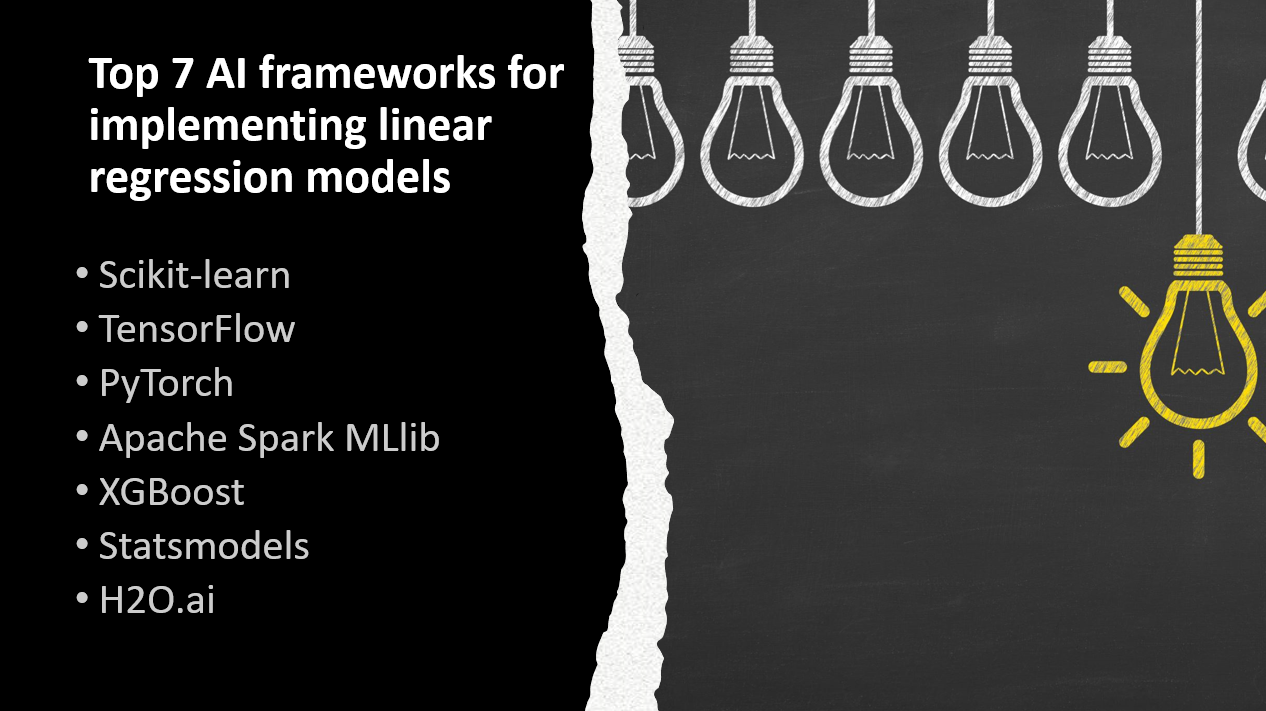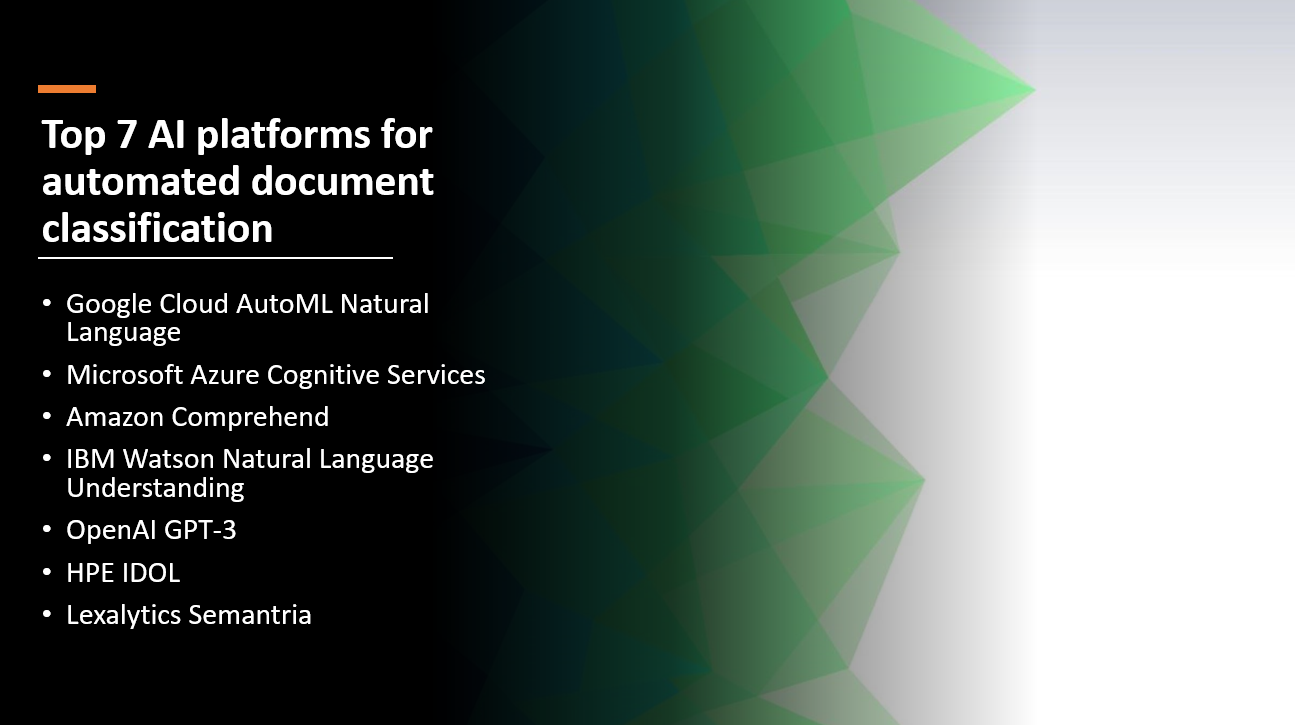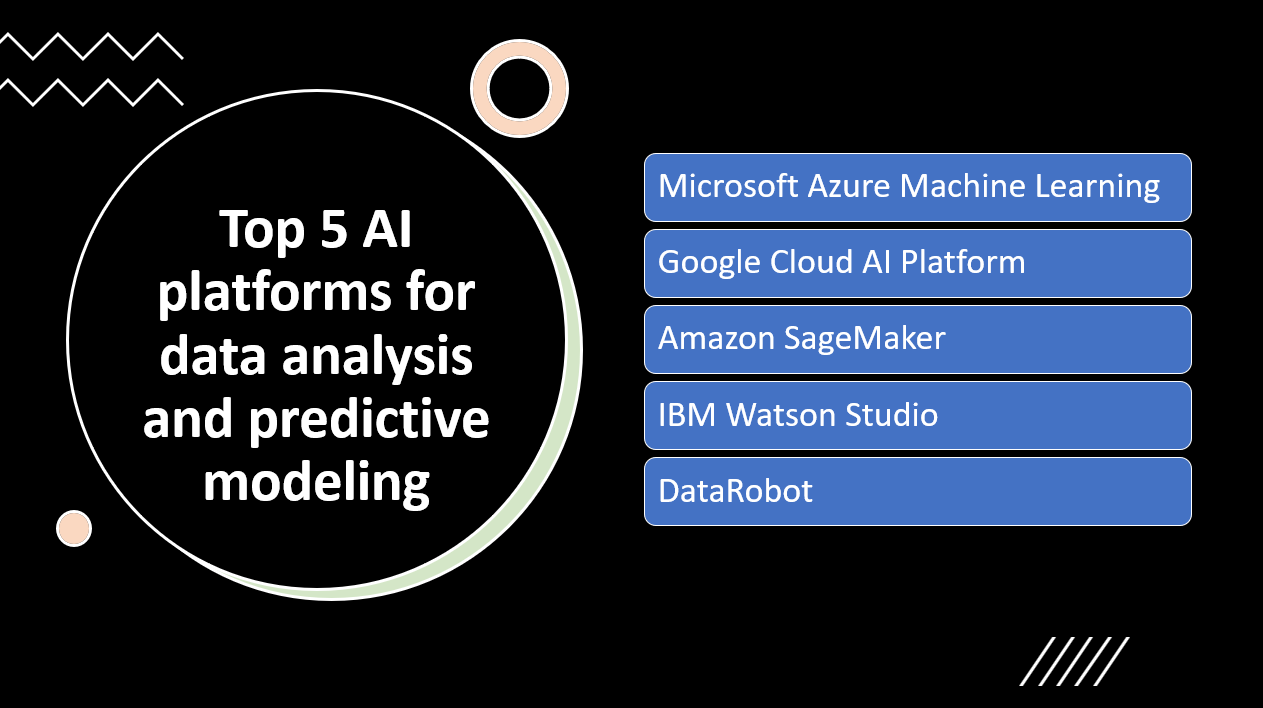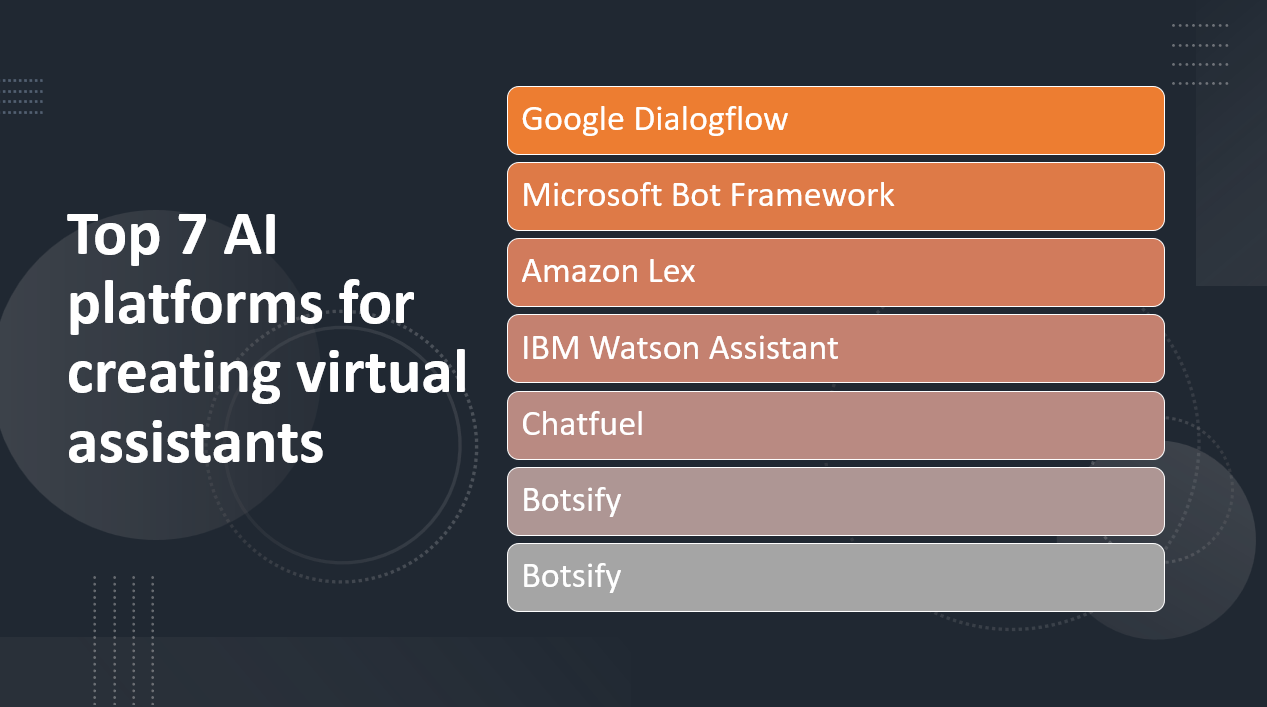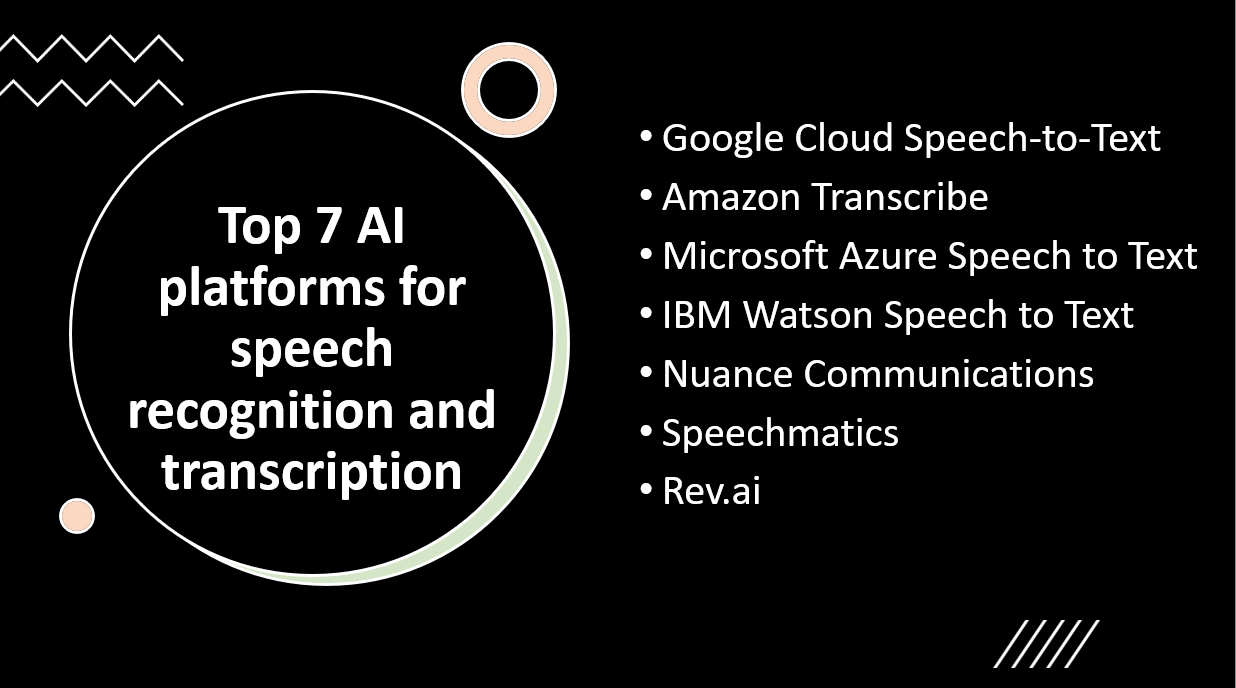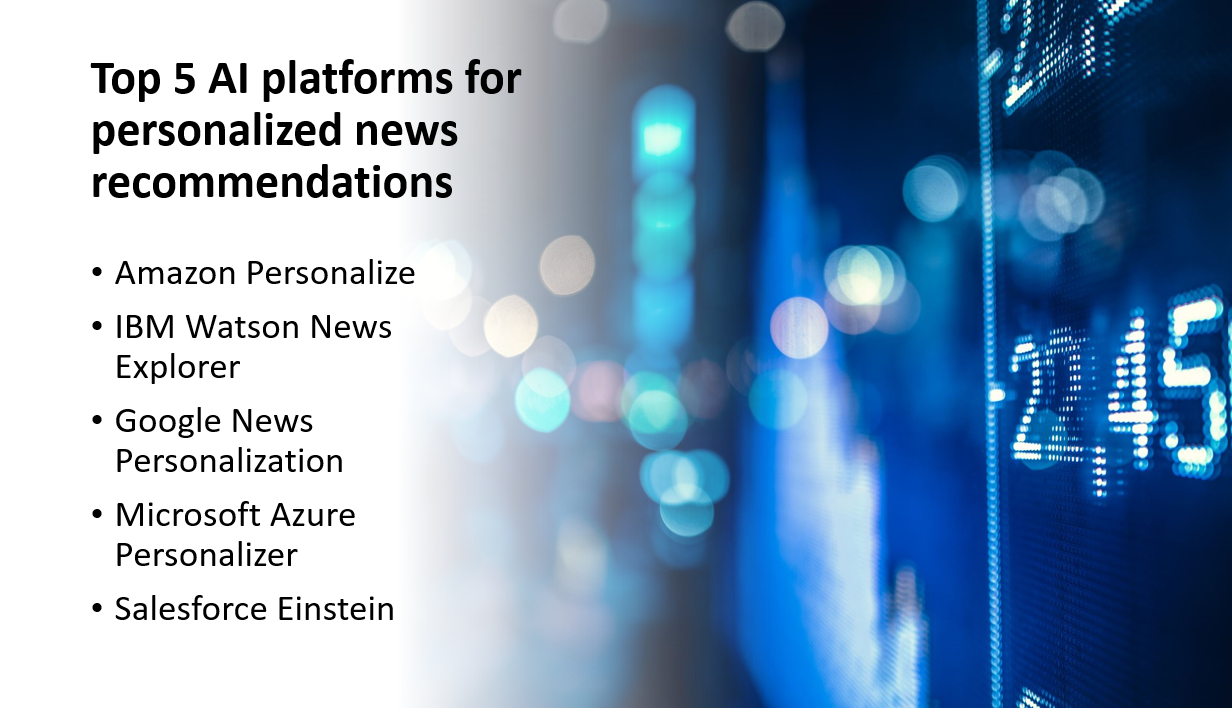
Introduction
In the digital age, personalized news recommendations have become essential for keeping users engaged and informed. Leveraging Artificial Intelligence (AI) platforms, media companies and news outlets can deliver tailored content to their audiences, increasing user satisfaction and retention. In this blog post, we will explore the top five AI platforms for personalized news recommendations, enabling organizations to offer relevant news articles and stories that cater to individual interests and preferences.
Why use AI platforms for personalized news recommendations?
- AI platforms deliver tailored news recommendations based on user preferences.
- AI ensures users receive news content aligned with their interests.
- AI-powered recommendations provide timely and up-to-date news articles.
- AI automates content curation, saving time for news publishers and improving relevance for users.
- AI systems refine news recommendations based on user interactions and feedback.
Related Reading:
Here are the top five AI platforms for personalized news recommendations:
1: Amazon Personalize
Overview and Importance
Amazon Personalize is a cutting-edge AI platform that specializes in providing personalized news recommendations. Powered by advanced machine learning algorithms, it enables news platforms to deliver highly relevant and engaging content to their users. By analyzing user behavior and historical interactions, Amazon Personalize tailors news recommendations to individual preferences, improving user satisfaction and increasing user engagement.
Learn more about Amazon Personalize
Key Features and Capabilities
Real-time Personalization
- Amazon Personalize continuously analyzes user behavior in real-time, allowing news platforms to deliver up-to-date and relevant news articles that align with users' interests and preferences.
Recommendation Algorithms
- The platform leverages a range of recommendation algorithms, including collaborative filtering and personalized ranking, to optimize content recommendations based on user behavior patterns and historical data.
Integration and Customization
- Amazon Personalize provides easy integration with news platforms, offering APIs and SDKs that allow seamless integration into existing systems. Moreover, it supports customization options, enabling news platforms to fine-tune the recommendation models based on their specific needs and target audience.
2: IBM Watson News Explorer
Overview and Importance
IBM Watson News Explorer is an advanced AI platform designed for personalized news recommendations. It leverages the power of natural language processing and machine learning to deliver relevant and tailored news content to users. By analyzing users' preferences, behavior, and interactions with news articles, IBM Watson News Explorer helps news platforms enhance user engagement and retention.
Learn more about IBM Watson News Explorer
Key Features and Capabilities
Natural Language Understanding
- The platform utilizes advanced NLP techniques to analyze news content and understand its context, enabling better content recommendations.
User Profiling
- IBM Watson News Explorer creates individual user profiles by learning from user interactions and preferences, tailoring news suggestions accordingly.
Contextual Recommendations
- The system delivers news recommendations based on topic relevance, user interests, and recency, enhancing the user's news consumption experience.
Related Reading:
3: Google News Personalization
Overview and Importance
Google News Personalization is an AI-powered platform that aims to deliver personalized news content to users based on their interests, reading behavior, and search history. By leveraging machine learning algorithms, it enhances the user's news consumption experience by offering relevant and engaging content.
Learn more about Google News Personalization
Key Features and Capabilities
Personalized Content Selection
- The platform uses AI algorithms to curate news articles, videos, and topics that align with the user's preferences, providing a tailored news feed.
Behavior Analysis
- Google News Personalization analyzes user interactions, such as clicks and reading time, to understand individual preferences and adjust news recommendations accordingly.
Real-time Updates
- The platform offers up-to-date news content by continuously updating its recommendations based on the latest user behaviors and trending topics.
4: Microsoft Azure Personalizer
Overview and Importance
Microsoft Azure Personalizer is an AI-powered platform that focuses on providing personalized content and recommendations to users, including news articles and other relevant information. It utilizes machine learning techniques to understand user preferences and optimize content delivery, enhancing the overall user experience.
Learn more about Microsoft Azure Personalizer
Key Features and Capabilities
Personalized Content Recommendations
- Azure Personalizer leverages machine learning algorithms to deliver personalized news and content based on individual user preferences, historical interactions, and context.
Dynamic Content Adaptation
- The platform continuously adapts and optimizes content recommendations in real-time, considering user feedback and changing interests to ensure the most relevant and engaging content is presented.
Integration with Azure Services
- Azure Personalizer seamlessly integrates with other Azure services, allowing developers to build end-to-end personalized news recommendation systems within their applications.
Related Reading:
5: Salesforce Einstein
Overview and Importance
Salesforce Einstein is an AI-powered platform that offers a suite of AI capabilities, including personalized news recommendations. It is designed to help businesses deliver relevant and timely content to their customers, improving engagement and satisfaction.
Learn more about Salesforce Einstein
Key Features and Capabilities
Personalized News Recommendations
- Salesforce Einstein uses AI algorithms to analyze user behavior, preferences, and interactions to provide personalized news and content recommendations, ensuring users receive information that aligns with their interests.
Behavioral Insights
- The platform tracks user interactions and behaviors, generating valuable insights that can be used to refine content delivery and improve user experience.
Seamless Integration with Salesforce
- Salesforce Einstein seamlessly integrates with Salesforce's suite of customer relationship management (CRM) tools, enabling businesses to leverage customer data and interactions to enhance news personalization and deliver targeted content.
Conclusion
AI platforms play a significant role in delivering personalized news recommendations, enhancing user satisfaction and engagement. The top five platforms for this purpose are Amazon Personalize, IBM Watson News Explorer, Google News Personalization, Microsoft Azure Personalizer, and Salesforce Einstein. They utilize advanced recommendation algorithms for real-time personalization, providing users with relevant and up-to-date news content. Personalized news recommendations lead to improved user engagement and loyalty, encouraging media companies and news outlets to adopt these AI platforms to keep users informed and connected with compelling content.

